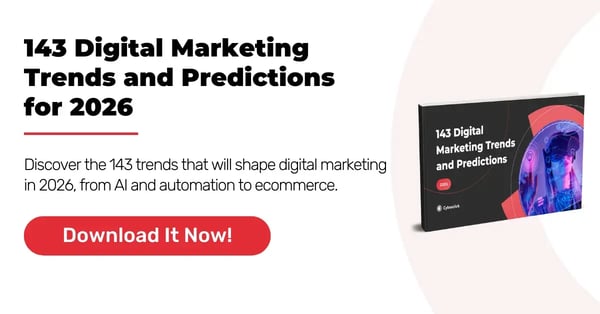In digital marketing, usability is key. In order to offer a satisfactory experience to your potential customers, the first step is to know how they use your website and how you can improve it to adapt to their needs and preferences.
Fortunately, today we have a lot of tools at our disposal to understand how consumers think, and we know what techniques to use to attract them. In this article, we are going to talk about one of the most useful techniques: eye tracking. We will tell you what eye tracking is, its objectives and benefits, what types there are, and some key learnings.
![]()
What is Eye Tracking?
Eye tracking is a solution related to neuromarketing that allows us to track the eye movements of users when they visit our website and thus extract information about the elements of the website that capture their attention.
This tracking is done through a tool called an "eye tracker". It is a monitor that launches infrared rays into the eyes of the person who is looking at the analyzed image. These rays move between the user's pupil and the device, making it possible to precisely calculate where the user is looking.
The analysis of eye movement patterns allows us to extract relevant data for our work as marketers, such as the elements that attract the most attention on a website or the areas that go unnoticed. This allows us to know where to place valuable content for the customer and improve the usability and efficiency of our websites.

Source: Usability.de
Objectives of Eye Tracking
Eye tracking is used to answer a large number of questions related to web usability, such as:
-
What is the first element that users see on each of the pages of our website?
-
Do the CTAs (call to action) immediately jump to the eye when entering the page?
-
What navigation system works best for users to find relevant information?
-
Are users reading the content or just glancing quickly through it?
-
Are there any elements that are distracting users from the action we want them to take?
This information, combined with other study methods, can help improve the design of all types of web pages and applications. But in addition, eye tracking can also be applied to other areas such as:
- Market research: Eye tracking allows researchers to better understand the behavior of customers and the factors that influence their purchasing decisions.
- Human resources: Through eye tracking, we can analyze the processes implemented in an organization and improve employee performance.
- Scientific studies: Eye tracking can be used to study the development and learning patterns of people with cognitive diseases.
Types of Eye Tracking
Currently, eye tracking studies use three main techniques:
- Stationary systems: Test participants sit in front of a computer, tablet, or smartphone that is equipped with infrared light emitters and cameras. Typically, this is conducted in a laboratory setting. The eye-tracking device is invisible, so it does not affect the user's behavior.
- Mobile or transportable systems: In this technique, users wear special eye-tracking goggles that include cameras and lenses. There are also virtual reality headsets with integrated eye tracking.
- Predictive systems: This technique uses specialized software that is capable of reproducing the habitual movement of the eyes in response to a given visual stimulus.
Once the study has been carried out, the results can be displayed using different visualization techniques, such as heat maps (which show the areas that have received the most attention using a color code) or route maps (which show the path taken by the eye in order).
Benefits of Eye Tracking for Neuromarketing
- Eye tracking allows us to answer in a precise and evidence-based way very important questions to understand consumer behavior in the digital environment.
- Eye tracking provides us with objective data on subconscious processes. Often, we are not aware of what really attracts us or we cannot express it because of the speed with which the scanning processes occur.
- Thanks to eye tracking, we can develop valuable marketing tools such as eye displacement patterns or heat maps, which help to optimize web design.
- If we combine eye tracking with neural measurement techniques (such as EEG and fMRI), we can measure the response of users to the content they are viewing through the activation of different areas of the brain, which allows us to achieve a much higher degree of accuracy.
- With eye tracking, we can test the actual design of a page, instead of presenting pre-designed cases or hypotheses. In addition, it provides us with real-time information.
- Finally, it is worth mentioning that one of its advantages over other neuromarketing techniques, such as brain scans, is its naturalness. Eye trackers are unobtrusive devices and allow the user to navigate the page as they would in a real environment, so the data is very reliable.
5 Lessons That Eye Tracking Studies Teach Us in Relation to Consumers
1) User Behavior is Predictable
In 2006, researcher Jakob Nielsen discovered that we normally browse the web in a predictable pattern.
Visitors to a website absorb content in a matter of seconds, following an "F" shaped pattern. First, they scan the page from left to right. Then they return to the left and scroll down. And then they make a second horizontal movement, return to the left and continue downward.
This eye movement pattern applies to three types of pages: "About" sections, ecommerce product listings, and search results pages.
Knowing this pattern helps us to better position the most important content and calls to action on the page to ensure that users see them.
2) Users Change Behavior When They Have a Goal
The F-pattern we explained in the previous section is useful to understand generally how users navigate, but there are exceptions.
Sav Shrestha compared the eye-tracking patterns of users who visited a website with a specific goal in mind and those who were simply browsing. The results indicate that when users have a goal in mind, they abandon the systematic pattern and prioritize speed, resulting in cluster-like patterns. When they know what they want, they try to find the information faster.
To apply this lesson to your website, it is advisable to make a list of your users' main goals and use a testing service to see how they behave when they try to achieve them.
3) Visual Elements Are Important
SEOmoz conducted an eye-tracking study of Google search results pages. The pages analyzed included links to sites, local results, and videos.
On pages with videos, the first thumbnail focused users' attention over the second. The attraction power of the image was such that it managed to outperform the first text-only organic result.
To harness the full power of this lesson, try placing the most important visual elements at the top and left of the page. This will ensure that they don't go unnoticed.
4) People Ignore Ads
In a 2007 study, Jakob Nielsen coined the term "banner blindness" to describe the tendency of users to ignore ads. In his own words, "we have confirmed for the umpteenth time that banner blindness is real. Users almost never look at anything that looks like an ad, whether it really is or not."
According to the study, users respond better to text, faces, and human bodies. In conclusion, if you decide to advertise online, test to measure the effectiveness of your ads.

For example, in a study by Usability.de using eye tracking in Google, it was found that users pay more attention to organic searches than ads.
5) Being Different Can Be Expensive
After decades of web evolution, blue is still the standard color for links, as it has become a call to action that users intuitively follow.
According to Dmitry Fedeyev, "when people visit a new website, the first place they look for things is where they find them on most websites; they draw on their experience to understand new content."
And this applies not only to the color of links but to different web conventions, such as the position of elements within the web. Deviating from these can affect the speed at which users find your content and lead to a poor user experience.
Responsable de la estrategia de contenidos y visibilidad en Cyberclick, con enfoque Allbound y especialización en posicionamiento SEO, GEO y automatización con IA. Gestión avanzada del CRM con HubSpot: base de datos, workflows, lead nurturing, scoring y reporting. Experiencia en marketing digital, comunicación corporativa y periodismo, uniendo estrategia, creatividad y tecnología para captar y convertir leads cualificados.
Responsible for content and brand visibility strategy at Cyberclick, with an Allbound approach and specialization in SEO, GEO (Generative Engine Optimization), and AI-powered automation. Advanced HubSpot CRM management: database segmentation, workflows, lead nurturing, scoring, and reporting. Background in digital marketing, corporate communications, and journalism—combining strategy, creativity, and technology to attract and convert qualified leads.






Leave your comment and join the conversation